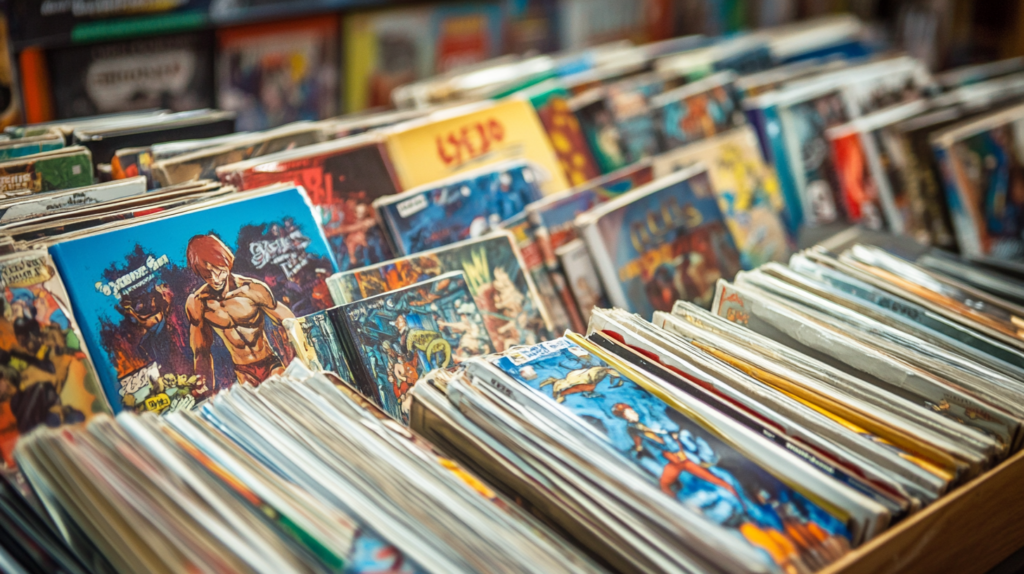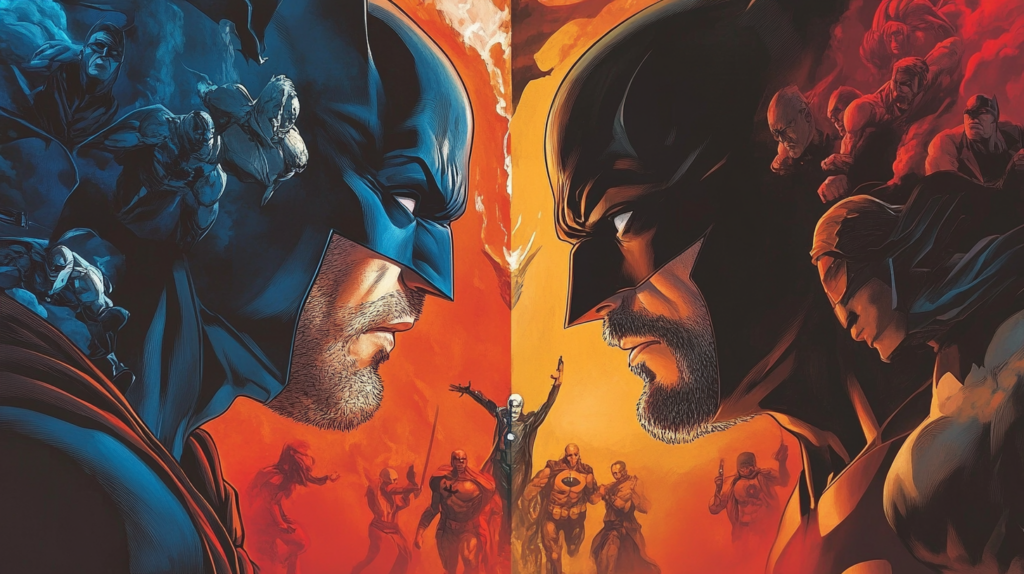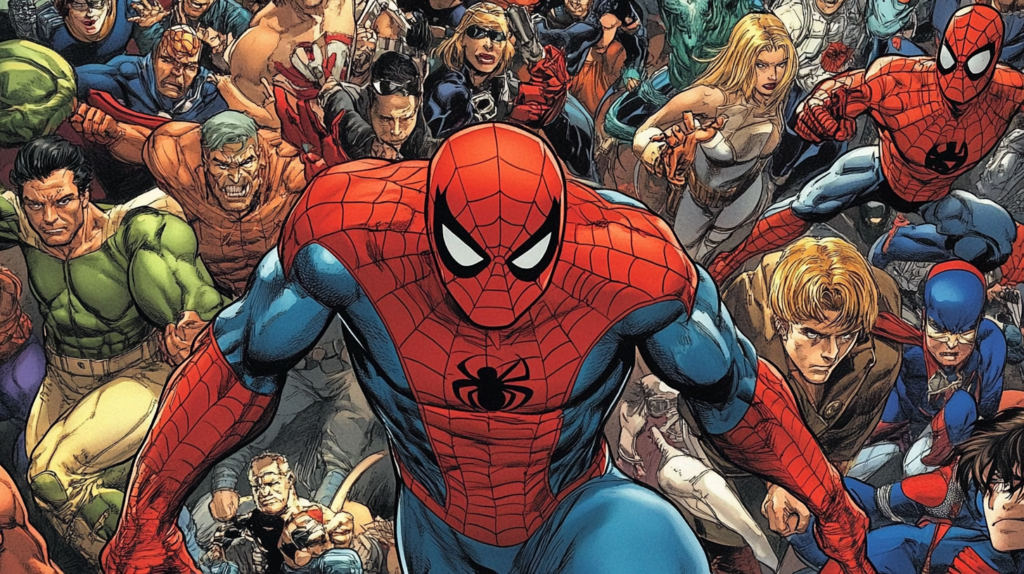Graphic Novels vs. Comic Books: The world of sequential art is vast and diverse, with graphic novels and comic books standing out as two prominent formats that have captivated readers for generations. While they share similarities in blending visual art with storytelling, they also have distinct characteristics that set them apart. As a cartoonist and avid reader, I’ve often explored the nuances between these two mediums. In this article, we’ll delve into the origins, formats, storytelling styles, and cultural impacts of graphic novels and comic books, highlighting their unique contributions to the art of visual storytelling.
Understanding the Definitions
What Is a Comic Book?
A comic book is a periodical publication that presents a story through sequential art, typically released in installments known as issues.

Key Characteristics:
- Format: Usually thin, staple-bound booklets ranging from 20 to 40 pages.
- Serialization: Stories are often part of an ongoing series, with new issues released monthly or bi-monthly.
- Genres: Widely associated with superheroes but encompass various genres like sci-fi, fantasy, horror, and comedy.
- Artwork: Vibrant, dynamic illustrations with speech bubbles and captions.

What Is a Graphic Novel?
A graphic novel is a complete story presented in comic-strip format and published as a book.
Key Characteristics:
- Format: Bound like traditional books, often with a spine, and can range from 50 to over 500 pages.
- Story Structure: Typically contains a standalone narrative with a clear beginning, middle, and end.
- Genres: Explores a wide array of themes, including memoirs, historical fiction, and social commentary.
- Artwork: Varied styles, from highly detailed illustrations to minimalist designs.

Historical Context
The Evolution of Comic Books
Golden Age (1930s-1950s):
- Introduction of Superheroes: Characters like Superman, Batman, and Wonder Woman became cultural icons.
- Wartime Influence: Comics were used for propaganda and boosting morale during World War II.
Silver Age (1950s-1970s):
- Rebirth of Superheroes: Marvel introduced characters like Spider-Man and the Fantastic Four.
- Comics Code Authority: Established to self-regulate content deemed inappropriate.
Modern Age (1980s-Present):
- Darker Themes: Exploration of complex narratives and anti-heroes.
- Independent Publishers: Rise of companies like Image Comics offering creator-owned titles.

The Rise of Graphic Novels
Early Beginnings:
- Will Eisner’s “A Contract with God” (1978): Often considered the first modern graphic novel.
- Art Spiegelman’s “Maus” (1980-1991): A Pulitzer Prize-winning graphic novel depicting the Holocaust.
Growth and Recognition:
- 1980s-1990s: Graphic novels gain critical acclaim, tackling mature themes.
- Mainstream Acceptance: Libraries and bookstores begin stocking graphic novels alongside traditional literature.
Contemporary Scene:
- Diverse Voices: Increasing representation of different cultures and perspectives.
- Adaptations: Many graphic novels are adapted into films and television series.

Storytelling Styles and Content
Narrative Structure in Comic Books
- Episodic Storytelling: Stories unfold over multiple issues, creating ongoing sagas.
- Cliffhangers: Often end with suspense to entice readers to buy the next issue.
- Character Development: Gradual evolution of characters over time.
Personal Insight:
Writing for comic books requires careful planning to maintain continuity and keep readers engaged across issues. It’s like weaving an intricate tapestry where each thread contributes to the bigger picture.
Narrative Approach in Graphic Novels
- Self-Contained Stories: Complete narratives that don’t require prior knowledge.
- Literary Themes: Delve into complex subjects like identity, politics, and existentialism.
- Artistic Freedom: Creators often experiment with unconventional storytelling techniques.
Personal Insight:
Creating a graphic novel allows for deeper exploration of themes and characters. It’s an opportunity to tell a comprehensive story without the constraints of serialization.

Artwork and Design
Visual Style in Comic Books
- Consistent Art Teams: Often involve different artists and writers, leading to varying styles within a series.
- Dynamic Panels: Emphasis on action sequences and dramatic visuals.
- Colorful Palettes: Bright colors to attract attention and convey energy.

Personal Observation:
The collaborative nature of comic books can lead to exciting variations in art styles, but maintaining consistency is key to preserving the series’ identity.
Visual Presentation in Graphic Novels
- Unified Vision: Usually created by a single artist or a consistent team, providing a cohesive aesthetic.
- Varied Panel Layouts: Flexible designs that suit the narrative flow.
- Artistic Experimentation: Use of monochrome, watercolor, or mixed media.
Personal Observation:
Graphic novels offer the freedom to tailor the visual experience to the story’s needs, resulting in a more intimate connection between the art and the narrative.

Audience and Accessibility
Target Audience for Comic Books
- Broad Appeal: Traditionally targeted at younger readers but now enjoyed by all ages.
- Collectibility: Attracts collectors who follow series and seek rare issues.
- Fan Communities: Strong fanbases that engage in conventions, discussions, and fan art.
Personal Experience:
Attending comic conventions and interacting with fans highlights the passionate communities that form around comic book series. It’s inspiring to see such enthusiasm.
Target Audience for Graphic Novels
- Literary Readers: Appeals to those who appreciate deep narratives and complex themes.
- Educational Settings: Used in schools and universities for their literary and artistic merit.
- Diverse Demographics: Attracts readers interested in specific genres or cultural perspectives.
Personal Experience:
I’ve witnessed how graphic novels can reach readers who might not typically pick up a comic book, bridging gaps between literature and visual art.

Cultural Impact and Legacy
Influence of Comic Books
- Pop Culture Icons: Superheroes have become integral to global entertainment.
- Merchandising and Media: Extensive franchises including movies, TV shows, and merchandise.
- Social Commentary: Address issues like justice, power, and morality.
Personal Reflection:
The enduring popularity of comic book characters speaks to their ability to embody universal themes and adapt to changing societal values.
Significance of Graphic Novels
- Critical Acclaim: Recognition as legitimate literary works.
- Adaptations: Successful translations into award-winning films and series.
- Representation: Platform for marginalized voices and stories.
Personal Reflection:
Graphic novels have pushed the boundaries of storytelling, proving that the medium can handle profound subjects with nuance and sensitivity.

Similarities and Differences Summarized
| Aspect | Comic Books | Graphic Novels |
|---|---|---|
| Format | Serialized, thin issues | Complete, bound volumes |
| Story Structure | Ongoing narratives with cliffhangers | Standalone stories with a clear arc |
| Art Style | Consistent within issues but may vary over time | Cohesive and unified throughout |
| Themes | Action-oriented, often superhero-focused | Wide range, including mature and complex topics |
| Audience | Fans of serialized storytelling, collectors | Readers seeking literary depth and variety |
| Distribution | Comic shops, specialty stores | Bookstores, libraries, online retailers |

The Future of Both Mediums
Digital Transformation
- Webcomics and Digital Releases: Both formats are embracing digital platforms for wider reach.
- Interactive Elements: Incorporation of multimedia and interactive storytelling.

Personal Outlook:
Digital platforms democratize access, allowing independent creators to share their work without traditional gatekeepers.
Blurring Lines
- Hybrid Works: Some creators blend the serialized nature of comic books with the depth of graphic novels.
- Expanded Genres: Growth in genres like memoirs, biographies, and educational content.
Personal Outlook:
The evolving landscape suggests that strict definitions may become less relevant, with focus shifting to the quality and impact of the stories told.

Graphic Novels vs. Comic Books
Graphic novels and comic books, while sharing the foundational element of combining visuals with text, offer different experiences to readers. Comic books provide the excitement of ongoing adventures and the thrill of following characters over time. Graphic novels offer complete narratives that can delve deeply into themes and characters, often appealing to a literary audience.
Final Thoughts:
As a cartoonist, I’ve found joy in both mediums. Comic books challenge me to craft engaging episodic content, while graphic novels allow me to explore stories in depth. Both formats enrich the art of storytelling and continue to inspire creators and readers alike.
Call to Action:
Whether you’re a lifelong fan or new to the world of sequential art, I encourage you to explore both comic books and graphic novels. Discover the vast array of stories waiting to be told, and perhaps even consider creating your own. The possibilities are endless in this dynamic and ever-evolving medium.




